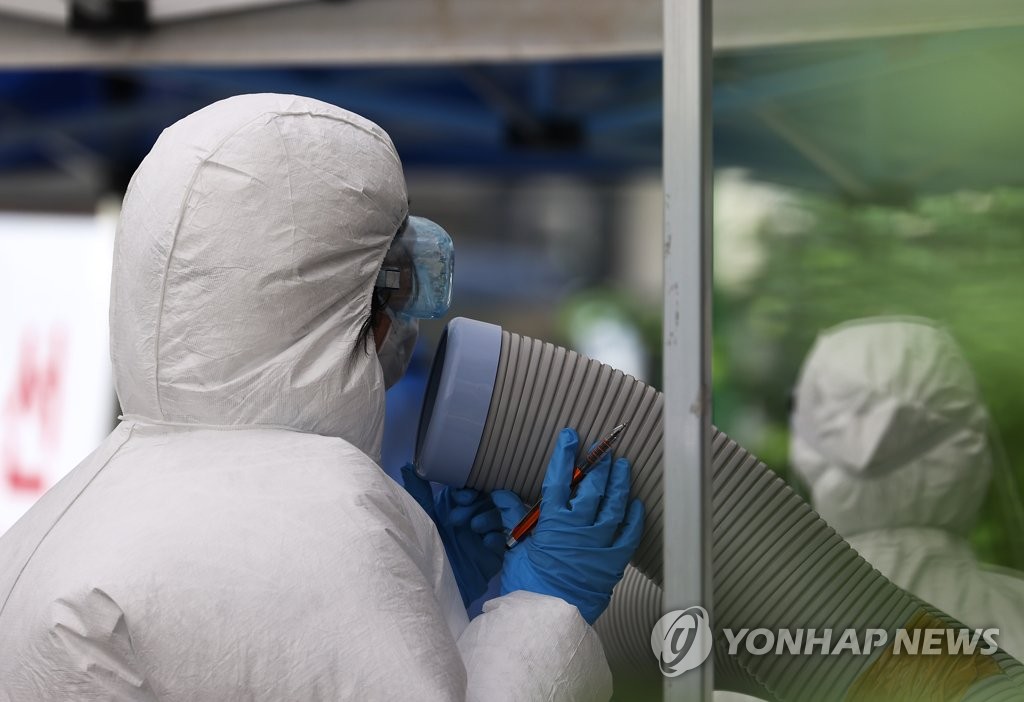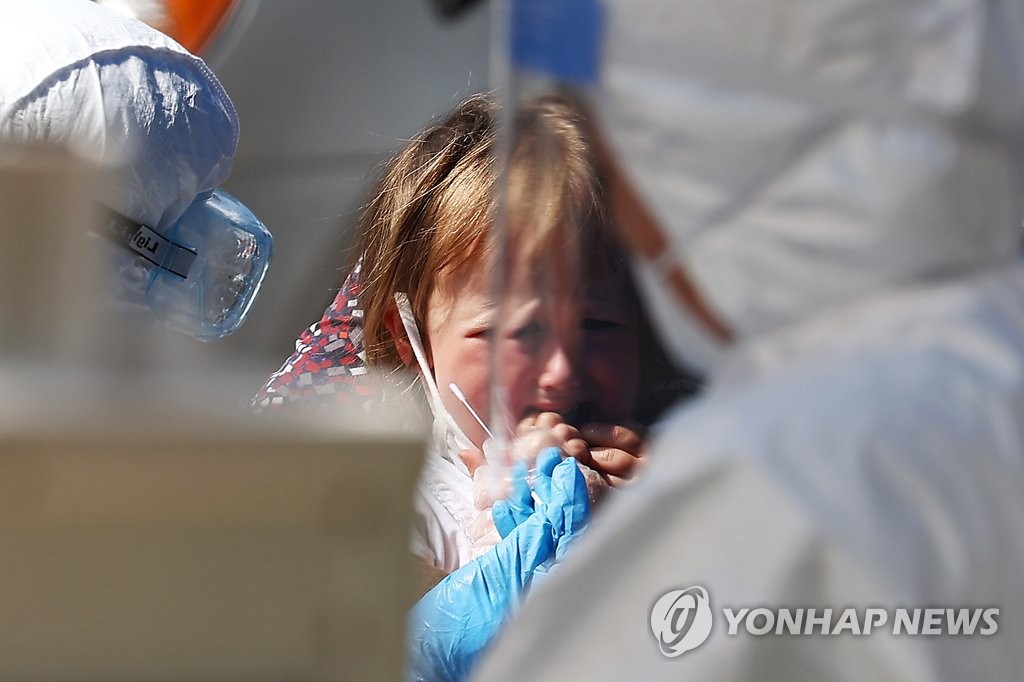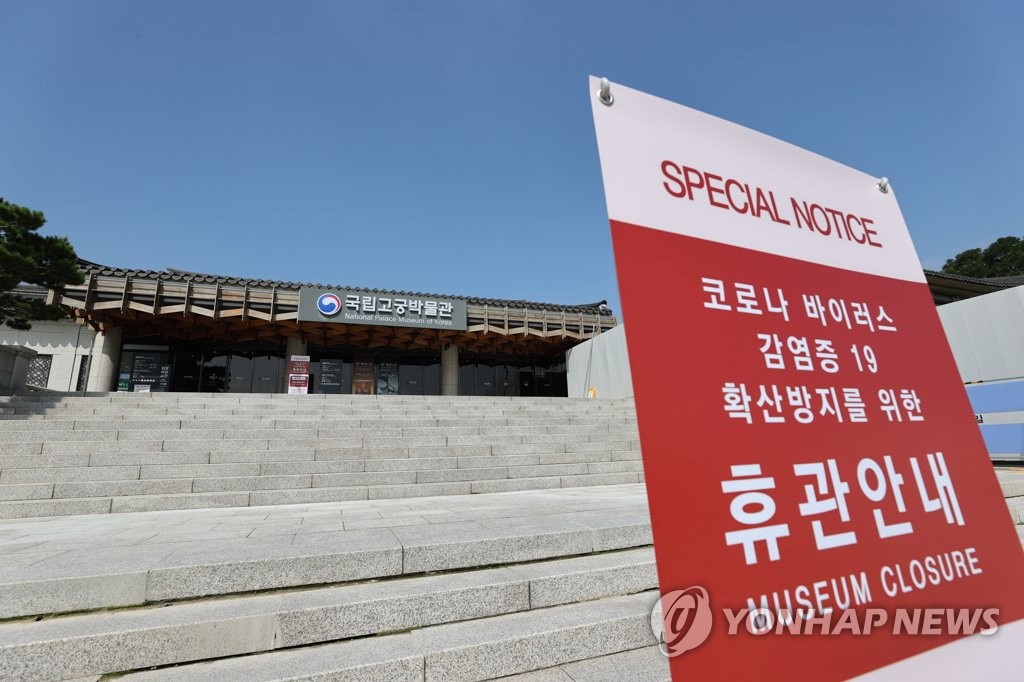- California Assembly OKs highest minimum wage in nation
- S. Korea unveils first graphic cigarette warnings
- US joins with South Korea, Japan in bid to deter North Korea
- LPGA golfer Chun In-gee finally back in action
- S. Korea won’t be top seed in final World Cup qualification round
- US men’s soccer misses 2nd straight Olympics
- US back on track in qualifying with 4-0 win over Guatemala
- High-intensity workout injuries spawn cottage industry
- CDC expands range of Zika mosquitoes into parts of Northeast
- Who knew? ‘The Walking Dead’ is helping families connect
Greater Seoul in peril over virus spread, new cases at over 5-month high of 297
South Korea’s daily new virus cases have now soared by three-digit figures for a week straight as the country on Wednesday reported the largest number of cases since early March, with infections traced to churches in the capital city of Seoul continuing to swell.
The country added 297 more COVID-19 cases, including 283 local infections, raising the total caseload to 16,058, according to the Korea Centers for Disease Control and Prevention (KCDC).
Over the past week, the daily new virus cases have been in the triple digits, with almost 1,300 cases being newly identified. Wednesday’s daily tally marks the most since March 8, when the country reported 367 COVID-19 cases.
The country implemented enhanced social distancing guidelines as of midnight to stem further spread of the virus.
South Korea was on the verge of putting the COVID-19 pandemic under control, reporting just 56 cases on Thursday.
On the following day, however, the figure shot up to a whopping 103 cases due to group infections from a church in the capital city of Seoul. On Sunday, South Korea reported 279 new daily infections, marking the first time since early March that the figure surpassed 200.
The country saw more than 100 daily cases in late July as well, but it was attributable to South Korean workers returning home from virus-hit Iraq through chartered flights.
Health authorities, however, say the current situation is worrisome as most of the cases have been locally transmitted, and centered in the capital and neighboring areas, home to half of the country’s 50 million population.



A medical worker stands next to cooling equipment at a makeshift clinic in central Seoul on Aug. 19, 2020. (Yonhap)
Of the newly identified local infections, 150 cases were reported from the capital city of Seoul, and 94 from the surrounding Gyeonggi Province.
Incheon, just west of Seoul, added eight more cases. The southern port city of Busan also reported nine additional infections.
Infections tied to the Sarang Jeil Church have spiked to 623 as of Wednesday noon, up 166 from a day earlier. Health authorities have carried out tests on 3,275 church members.
Of the identified patients, those from the greater Seoul accounted for 588.
Around 130 members are currently waiting to be tested, while the whereabouts of nearly 400 people remain unknown.
Health authorities said around 17 percent of the church members who have been tested were confirmed to be infected with COVID-19.
The church-linked cases have also spread to call centers, offices, medical institutions, and other religious facilities, they added.
Other major cities across the nation also continued to report cases linked to the church, as they were in close contact with virus patients during a massive weekend rally, in which large numbers of church members participated.
Some 10 patients who joined the anti-government rally Saturday were infected, even though they were not affiliated with the conservative church.
“We are facing a critical juncture, as the outbreaks in the Seoul metropolitan area can lead to a new wave of nationwide pandemic,” Vice Health Minister Kim Ganglip said in a regular press briefing. “We can only curb the spread of the virus when people strictly follow the social distancing guidelines.”
A Starbucks cafe located in Paju, north of Seoul, has reported 55 patients, up six from the previous day.
As the new daily cases spiked, South Korea decided to raise the level of social distancing in Seoul and the surrounding Gyeonggi Province by one notch to Level 2 in the three-tier system for two weeks from Sunday.
Starting Wednesday, the measure was expanded to Incheon, just west of Seoul.
More strings were attached to South Koreans’ daily lives as well. Outdoor gatherings of more than 100 people are strictly restricted. If they are held indoors, the ceiling is 50 people. Sports events will be allowed without spectators.
So-called risk-prone facilities, including karaoke rooms, clubs, PC cafes and buffets, have been ordered to shut down.
With religious facilities emerging as the hotbed of the pandemic, churches in the greater Seoul area will not be allowed to have in-person worship services.
Previously, South Korea only asked churchgoers in the region to refrain from holding gatherings other than regular worship services.
While such measures are relatively loose compared to draconian lockdowns that have been put in place in other countries, they are still deemed the strongest action made by South Korea, which reported its first case on Jan. 20.
“For the next two weeks, we urge residents of the metropolitan area to stay home. They should only go outside on limited occasions, including going to work, purchasing necessities, and visiting hospitals,” Kim said.
South Korea also vowed to take stern actions against those who violate quarantine rules.
Health authorities, however, said they do not plan to immediately raise the alert level, which would ban gatherings of 10 or more people.
“The country will be able to observe the effect of the current Level 2 social distancing scheme over late August and early September,” Kwon Jun-wook, a senior health official, said in a separate briefing.
Health authorities are currently struggling to curb the spread of the virus in the greater Seoul area, which houses around half of the country’s population, after the southeastern city of Daegu reported over 5,000 virus cases linked to a religious sect, the Shincheonji Church of Jesus.
Due to the cluster infections, the country’s new daily virus cases peaked at 909 on Feb. 29.
On Wednesday, South Korea reported just 14 imported cases, with the United States accounting for four infections. Three were from Kazakhstan, and there were also cases from Indonesia, France and Spain.
South Korea, meanwhile, reported no more deaths, keeping the toll at 306. The fatality rate was 1.91 percent.
The total number of people released from quarantine after making full recoveries stood at 14,006, up 72 from the previous day.
The country has carried out 1,715,064 COVID-19 tests since Jan. 3.












